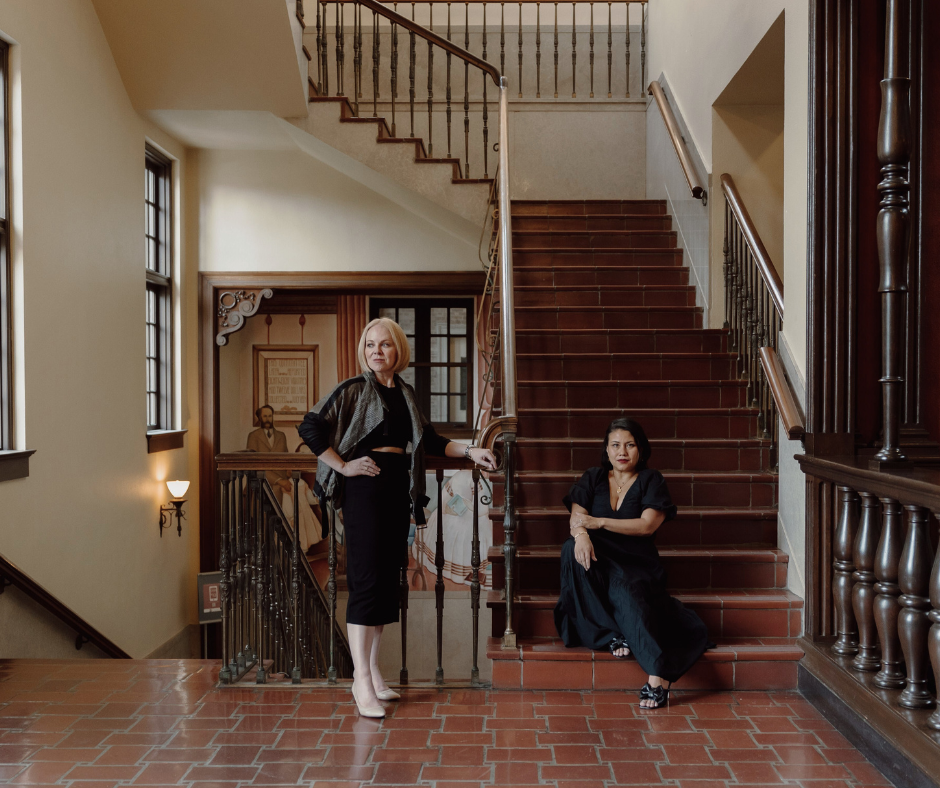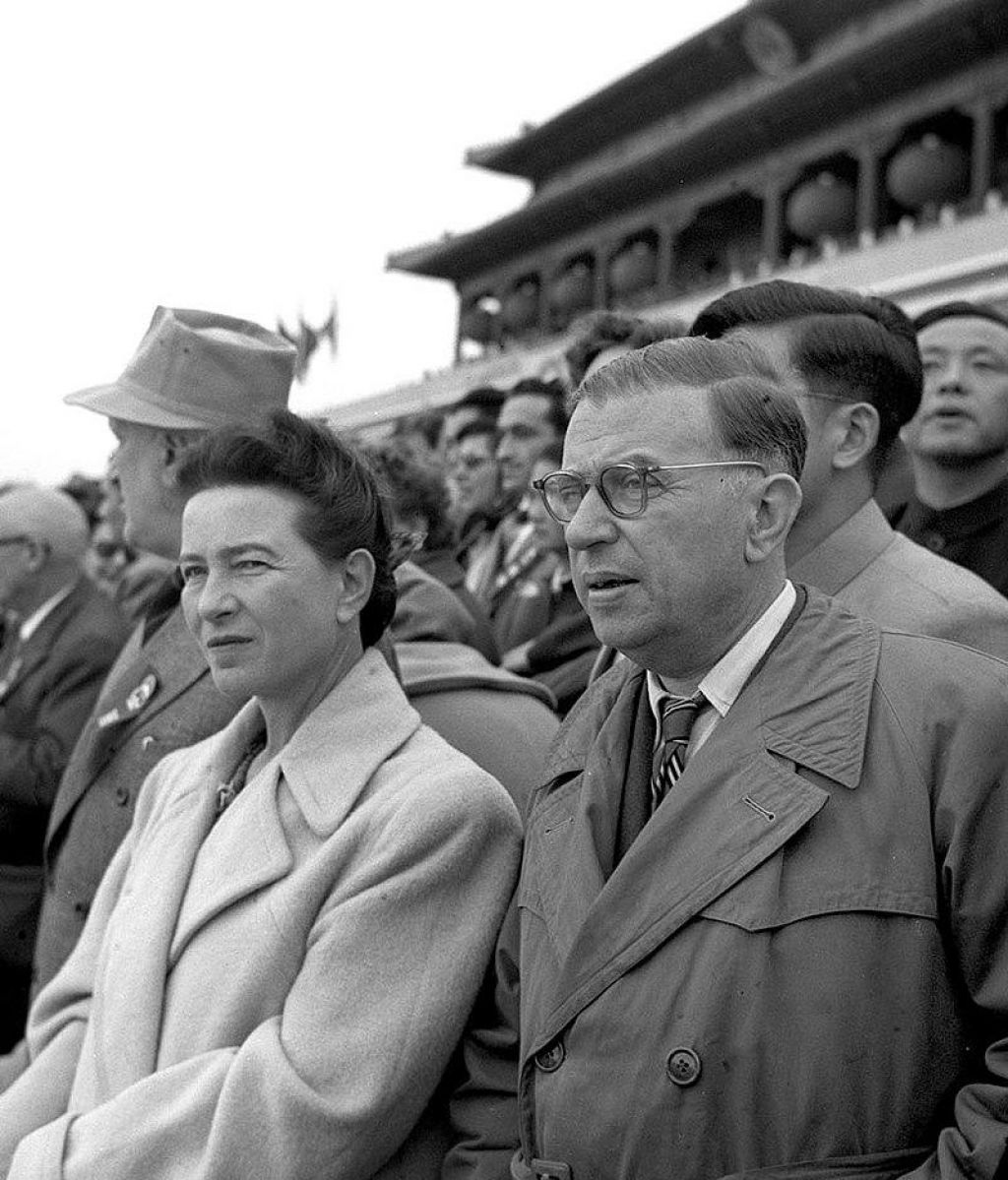
Authenticity in the Workplace: Are You Your True Self at Work?
Summary
Reflection Questions
Journal Prompt
In our quest for professional fulfillment and meaningful workplace relationships, we often grapple with the question: how authentic are we at work? Our true selves sometimes mingle and sometimes clash with the personas we adopt at work. In this article, we’ll navigate through the nuanced concepts of Honne and Tatemae—the Japanese dichotomy of inner feelings versus public facade—and Jean-Paul Sartre’s profound insights on authenticity and bad faith. These philosophies offer a lens through which to examine our own experiences—shedding light on the often-unspoken complexities of workplace behavior. As we discuss the value, complexity, and appropriate timing of authenticity at work, I will also share a few of my own experiences in leadership positions at LUDC and DesignDash.
Understanding Honne and Tatemae
Human interactions are complex and paradoxical, so few concepts capture the essence of our social conduct quite like the Japanese terms Honne and Tatemae. Though these concepts are rooted in Japanese culture, they are almost universally applicable in any polite society—though not to the same extreme. Honne refers to our true feelings and desires—those we often keep cloaked under a veneer of social propriety. It’s the raw, unfiltered self that emerges in safe, private environments.
On the other hand, Tatemae represents the public facade—the side of ourselves we present in social and professional settings, often governed by societal norms and expectations. These concepts are deeply embedded in the historical ethos of Japanese society—evolving from a complex interplay of social hierarchy, respect, and harmony.
The Cultural Significance of These Concepts in Japanese Society
In Japan, Honne and Tatemae help maintain social harmony and psychological safety. The Japanese place great emphasis on wa—or harmony—which is considered essential for a cohesive society. Honne and Tatemae serve as tools to balance personal truth with social harmony.
In a culture where direct confrontation and difficult conversations are often avoided, these concepts allow individuals to express disagreement or dissatisfaction in subtle, non-confrontational ways. It’s a diplomatic dance, where what is left unsaid is as important as the spoken word.
This intricate balance reflects a deep understanding of the human psyche and the complexities of social interactions—teaching us that sometimes, what we conceal is as significant as what we reveal.
Comparing Eastern and Western Perspectives on Authenticity and Social Conduct
Social norms obviously vary considerably from one culture to the next. When we pivot from the Eastern context and look at the Western perspective—particularly the American viewpoint—the contrast is striking. Western cultures—with their emphasis on individualism and directness—often view the concept of having separate private and public selves as disingenuous or duplicitous. As our society has modernized, this viewpoint has become more of the norm. In a society that prizes authenticity and transparency, the idea of a public facade may seem inauthentic.
When I moved to Texas from the Midwest, I wasn’t so much struck by the overt friendliness, but more so the culture around what it meant to be friendly. I say this because the Midwest is quite a friendly place! But nowhere near what I experience here in Texas or to a greater extent in Georgia, where my in-laws live. Still, there is this sort of “bless your heart” phenomenon that could be construed as politeness concealing a more realistic (or at its worst, patronizing) truth. I think Southerners are best at this dance of skipping around difficult, negative interactions with a grace that is most certainly taught.
However, this viewpoint can oversimplify the complex nature of human interactions. It fails to acknowledge that in all Western societies, we wear masks to some extent—adapting ourselves to different roles—be it as a professional, a parent, or a friend. When we spend time with close friends or family, we are more authentically ourselves, but when we spend time with colleagues or clients, we share less of our true selves. Whether out of respect for the other person or caution in protecting our privacy and well-being, most of us adopt a public persona to a certain extent.
While the concepts of Honne and Tatemae may initially appear foreign or even counterintuitive to a Western audience, they offer a valuable perspective on the universal human experience of navigating our multiple selves. In exploring these contrasting views, we gain a deeper understanding of authenticity—not as a singular state of being, but as a multifaceted and dynamic process shaped by culture, context, and personal experience.
Sartre’s Concept of Authenticity and Bad Faith

Jean-Paul Sartre presents a compelling narrative on the essence of authenticity. To Sartre, authenticity is an existential imperative. It involves the conscious acknowledgment that we are the architects of our identities through our choices and actions.
“We are our choices.”
Jean-Paul Sartre
This succinct yet profound statement encapsulates Sartre’s existentialist philosophy, where authenticity is deeply intertwined with the choices we make. It reflects the idea that our true selves are defined not by predetermined traits or external circumstances, but by the decisions we actively make in our lives. In this view, living authentically means taking responsibility for our choices and recognizing that they are a true expression of who we are.
Sartre posits that inauthenticity—or bad faith—arises when we deceive ourselves into believing that we are not free, that our roles and social identities are fixed and define our being. This self-deception—according to Sartre—is a betrayal of our true nature, which is free and constantly in flux. Authenticity, therefore, demands a relentless pursuit of self-awareness and courage to face the anxiety of freedom—the understanding that we are ultimately responsible for who we become.
The first book I read after having my daughter was Nausea. If you’ve read it, then you can understand what my post-partum mindset was like. But in this bleak novel, I found a compelling idea: life was given meaning because you make a commitment to making it meaningful. When those commitments are rooted in what you authentically desire, not necessarily what others or your role in society decides for you, then you are truly living. I’ll tie this into work in a moment, but when I first read this, I felt like I had an obligation to make decisions that were for me, not only those that were aligned with my role as a new mother. It was quite an empowering thought!
The Famous Waiter Anecdote Illustrating the Concept of Bad Faith
One illustrative example of Sartre’s concept of bad faith, or acting inauthentically, is his famous waiter anecdote. In this example, a waiter in a café is described as overly zealous in performing his duties—almost too eager to fit into the mold of what a ‘waiter’ should be.
According to Sartre, the waiter is acting in bad faith. He is not merely fulfilling his role; he is identifying himself entirely with it—denying his own freedom and the multifaceted nature of his being. This waiter has become an object—an ‘idea’ of a waiter—rather than a free individual choosing to act as a waiter.
The anecdote sharply encapsulates the essence of bad faith—the loss of self in the roles we play and a surrender of our freedom to the script society has written for us. Sometimes, I fall victim to this thinking that I must wear certain luxury designers in order to truly fit my role as COO. Or, I’ll fall into a conversation at a PTA meeting acting unlike my real self in order to embody the role of perfect working mother. These are not in any way providing a real philosopher’s insight into this and perhaps, I am way off base, but for me this thought applies whenever I’m feeling that I’m doing one thing to appear like something I’m not. It’s almost like a weird, roundabout manner of people pleasing.
Analysis of Acting Authentically vs. Playing Roles in a Societal Context
Sartre’s philosophy surrounding the authentic self compels us to reflect on the roles we play in our own lives. How often do we—like the waiter—lose ourselves in the roles assigned to us by society? This reflection is particularly relevant in the workplace, where professional roles can be so all-consuming that our true selves seem to recede.
However, Sartre’s call for authenticity is not a rejection of these roles but rather an invitation to engage with them consciously. It’s about recognizing that while we may act as a manager, a colleague, or an employee, these are roles we play—not the sum total of our existence. But is playing a role always inauthentic? Authenticity—in this context—means acknowledging the act, and understanding that we have the freedom to shape these roles and infuse them with our true selves.
It’s a delicate balance—maintaining the professional decorum necessary in a workplace while not losing sight of our individuality and personal freedom. In seeking this balance, we find a pragmatic approach to authenticity—one that honors both our individual essence and our social responsibilities. Of course, striking the appropriate balance between authenticity and professionalism is more complex as a leader or member of management.
More on that later.
Personal Perspective: A Balancing Act in American Work Culture
Now, I’d like to share a few of my own experiences with authenticity in the workplace. Initially, I viewed my professional demeanor as a necessary mask, an alternate persona donned to align with workplace norms. It was a gradual change. As I gained more experience with leadership roles and managing others, I felt like my authentic self started to slip away. My language became more “Corporate speak” and I started to think more about “optics” and perception. This perspective—however—has begun to shift as I consider the complexities of authenticity and identity.
I realized that this ‘mask’ was not a facade to conceal my true self but a facet of my multifaceted identity. This revelation has not been immediate; it was a gradual, decade-long awakening to the idea that authenticity in the workplace isn’t about shedding all forms of professional etiquette to reveal my raw self underneath. It’s also not a complete departure from the person I am with my husband, children, and loved ones.
Rather, it’s about finding a harmonious blend—a way to infuse my true character into professional roles without compromising the effectiveness and decorum expected in a work setting.
The Struggle with Being Agreeable at Work vs. Being Direct and Impassioned in Personal Life
One of the most striking contrasts I’ve grappled with is the dichotomy between being agreeable at work and being direct and impassioned in my personal life. In professional settings, I often found myself adopting a more agreeable, subdued demeanor. But if you see me at home or ask my husband, I can be pretty disagreeable, contradictory, and downright blunt. Sometimes “no” is my favorite word. Does this mean I’m inauthentic in the workplace if my personal attitude is so at odds with my workplace behavior? I don’t think so. It’s not inauthenticity, but a conscious adaptation to and desire for being collaborative in the often nuanced nature of workplace interactions. But I still struggle greatly with this. Especially because work takes up so much of my life, reconciling who I am at work with who I am at home has not been easy. Understanding that these are one in the same has been even more of a challenge.
How the Concepts of Honne and Tatemae Helped Reconcile These Differences
The concepts of Honne and Tatemae were instrumental in reconciling these seemingly conflicting aspects of my personality. Understanding these concepts helped me appreciate that having different modes of self-expression in different settings does not equate to inauthenticity.
In Japanese culture, Honne and Tatemae are not viewed as contradictory but as complementary forces that maintain social harmony. Applying this perspective to my own life, I began to see my work persona not as a departure from my true self but as a necessary adaptation—my Tatemae. It allowed me to function effectively in a professional environment while still retaining my Honne—my true self—in personal settings.
This realization was liberating. It gave me the freedom to navigate the American work culture with a newfound understanding that authenticity is not about being the same person in all contexts but about being true to oneself in a way that respects the dynamics of each situation.
The Complexity of Authenticity for Creative Entrepreneurs

The role of a creative entrepreneur intertwines the personal and the professional in unique and often challenging ways. As leaders, we all feel pressure to be authentic but also somewhat authoritative and detached.
On one hand, there’s a natural inclination to infuse your business with your personal values and vision—to make it a genuine extension of who you are. Yet, on the other hand, there’s a pressing need to uphold a professional demeanor that instills confidence and respect among your team. This balancing act is not just about maintaining an image; it’s about being true to your vision for the business while also being a leader your team can rely on.
It involves making tough decisions that may not always align with your preferences on a personal level but serve the greater good of your enterprise. This intersection of personal authenticity and professional pragmatism is where the true challenge lies for creative entrepreneurs.
The Fine Line Between Being a Relatable Leader and Maintaining Professionalism
Navigating the line between being a relatable, approachable leader and maintaining an air of professionalism with colleagues and employees is akin to walking a tightrope. On one side is the desire to build genuine relationships with your team, to be seen as more than just a figurehead—to be viewed as someone who understands and values their perspectives.
Yet, on the flip side, there’s the imperative to establish boundaries that safeguard the respect and authority necessary to lead effectively. This delicate balance is especially pronounced in creative fields, where emotional intelligence and personal connection often drive innovation and collaboration.
Striking the right balance requires a deep understanding of both your own authentic self and the diverse needs and personalities within your team.
Examining My Relationship with DesignDash Co-Founder Laura Umansky
A poignant example is my relationship with Laura—my DesignDash co-founder and colleague at Laura U Design Collective. With Laura, I find that I can be my true self—sharing insights and ideas with a level of openness that’s rare in typical manager-employee relationships.
This connection stems from a shared passion for our work and a mutual understanding of each other’s personal and professional aspirations. However, this level of openness is not something I can replicate with every team member.
With others, I have to maintain a more measured, professional distance. This distinction is not a reflection of favoritism but a pragmatic approach to leadership. Each relationship within a team requires a tailored approach—guided by the individual dynamics and the professional context.
In my professional relationship with Laura, our rapport allows for a more personal connection, but it’s crucial to recognize that such a relationship might not be appropriate or effective in certain situations with employees. This nuanced approach to leadership—understanding when to be a friend and when to be a mentor or a guide—is a vital aspect of authenticity in the role of a creative entrepreneur.
Reconciling Our Work Personas with Personal Identities
Reconciling our work personas with our personal identities is difficult and can leave us all feeling a bit unmoored from time to time. It requires a nuanced approach—one that requires both introspection and adaptability.
At the core is self-awareness. By understanding our core values and beliefs, we can identify what aspects of our true selves are non-negotiable and which can be flexibly adapted to fit our professional environment. This awareness enables us to present a version of ourselves at work that is both authentic and appropriate for the setting.
Setting clear boundaries is also essential. These boundaries help in differentiating our personal identities from our professional roles, allowing us to switch gears without losing sight of our true selves. It’s about recognizing that while we may play different roles, they are just facets of a larger, complex identity.
Moreover, effective communication is key. It’s essential to articulate our needs and limits clearly—ensuring that while we adapt to our work environment, we do not compromise on the fundamental aspects of our identity.
My Personal Anecdotes and Experiences in Navigating These Dual Roles
Reflecting on my own experiences, I remember when my personal passion for candid, direct communication appeared at odds with the tact required in my professional role. In my early days as a team leader, I often found myself tempering my natural directness to better fit the team’s dynamics.
This adaptation initially felt like a betrayal of my authentic self. However, over time, I realized that this was not a loss of authenticity but a growth in my ability to communicate effectively in diverse settings. This evolution was a lesson in the fluidity of authenticity. It’s not about rigidly adhering to a fixed sense of self but about adapting while staying true to your core values.
I also think about the challenge of separating my work life from my personal life—especially as someone deeply passionate about their work. I often found the lines blurring—with work thoughts infiltrating personal time.
I realized that I needed to consciously dedicate time to personal interests and relationships—reaffirming the value of my life outside of work. This intentional separation helped me maintain a healthy balance—ensuring that while my work is a significant part of my identity, it does not define my entire being.
These experiences underscore the ongoing process of negotiating the boundaries between our work and personal selves.
Balancing Leadership and Relatability: Final Thoughts on Authenticity at Work
Authenticity in the workplace is not a static state but a dynamic process of negotiation and adaptation—influenced by cultural backgrounds, personal values, and the roles we play. By examining the concepts outlined above and referencing my own experiences with colleagues, we have highlighted the importance of embracing our multiple selves—understanding that our work personas are part of our identities, but not their entirety.
As we part ways, I encourage you to reflect on your own experiences—both as a leader and as an employee. Consider how your cultural background and personal beliefs shape your work persona. Reflect on how you balance authenticity with professionalism in your workplace. Thanks for reading!
By Melissa Grove.








